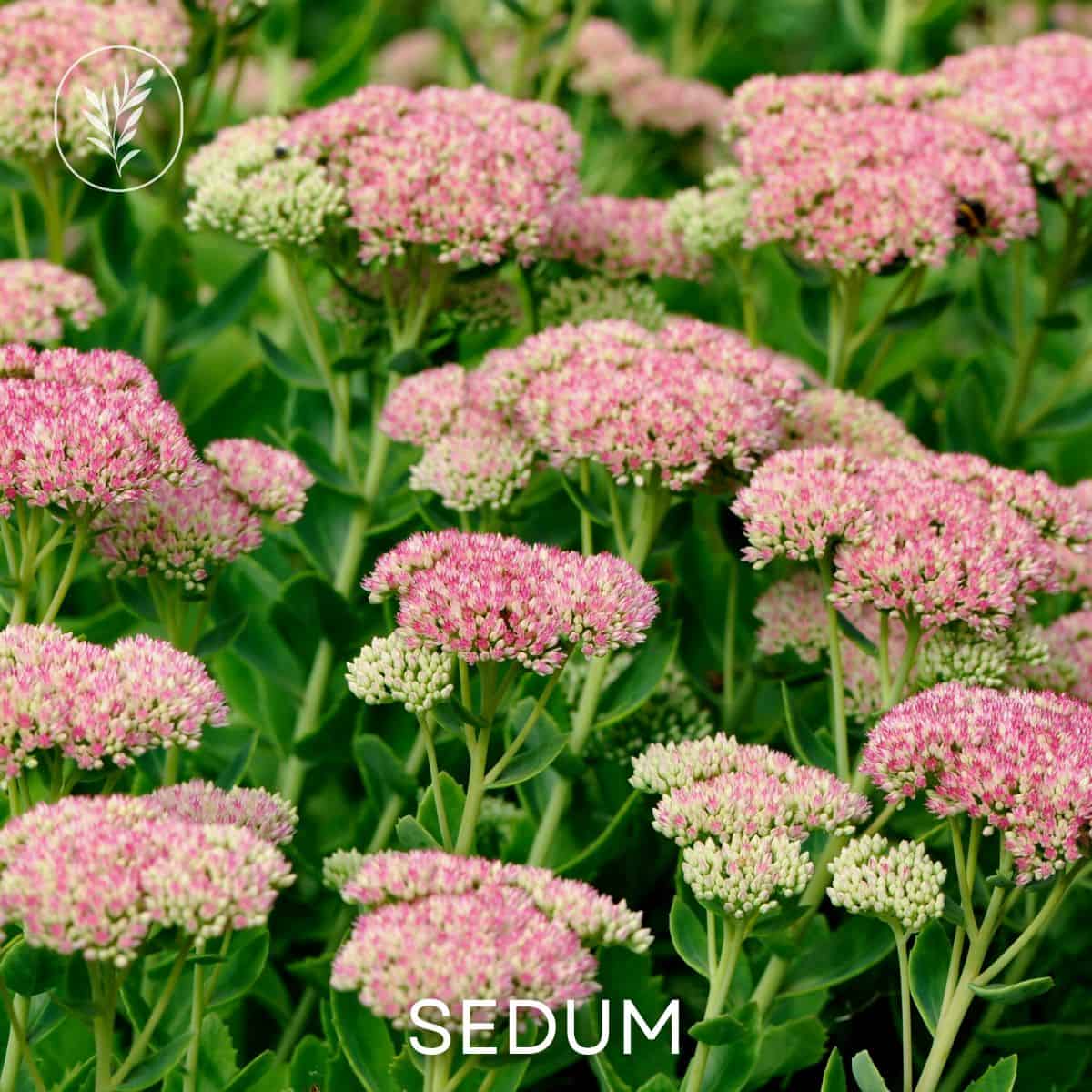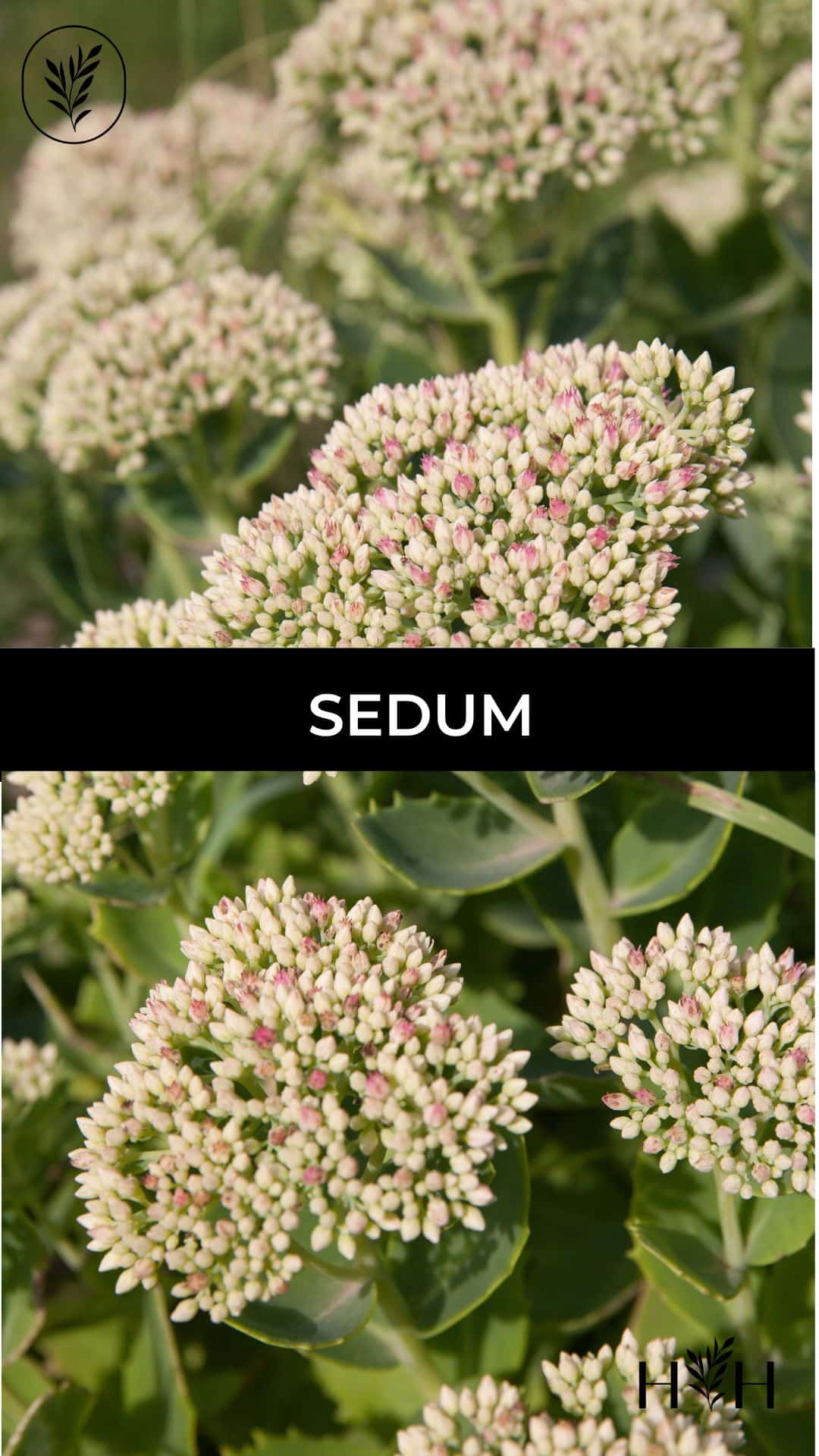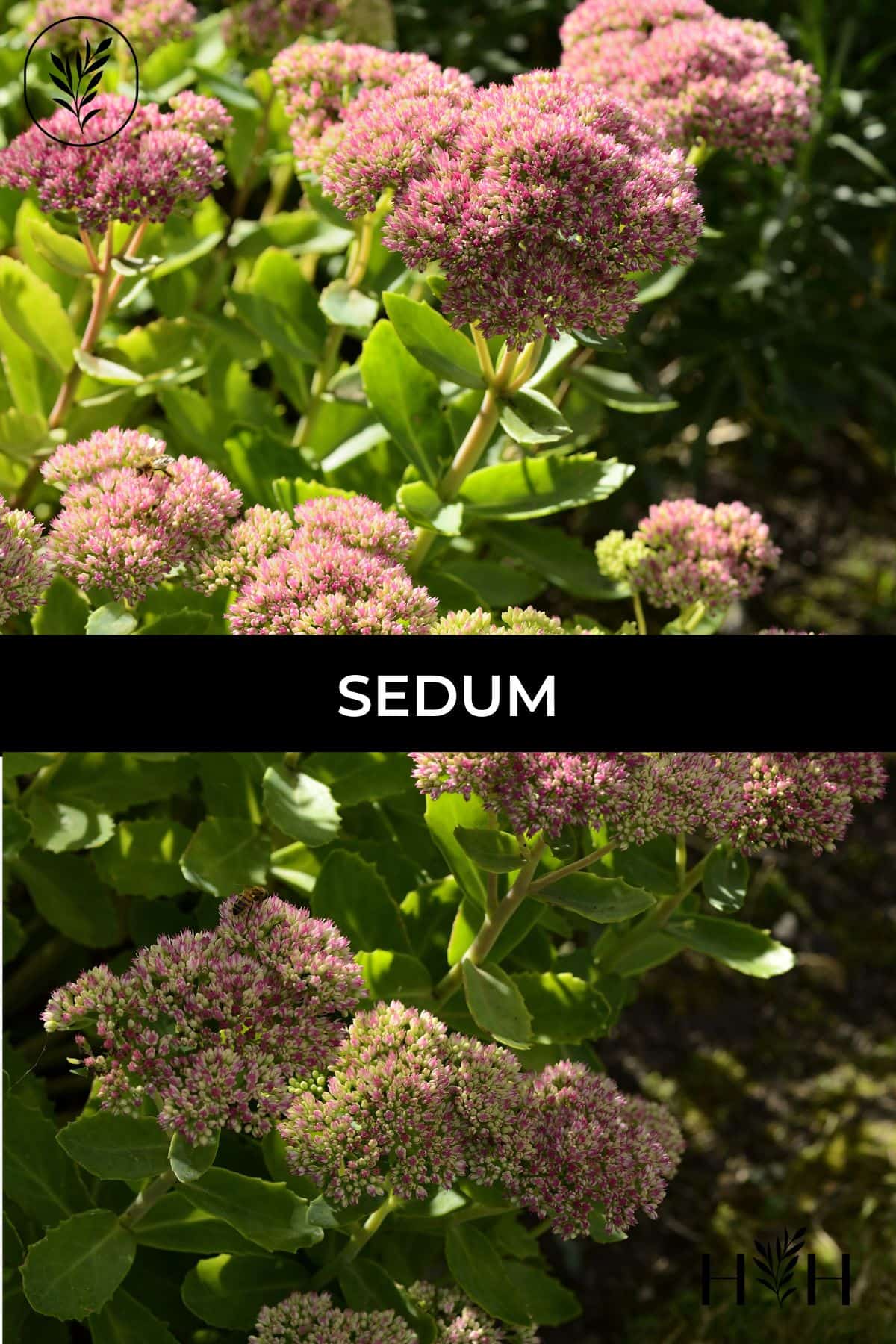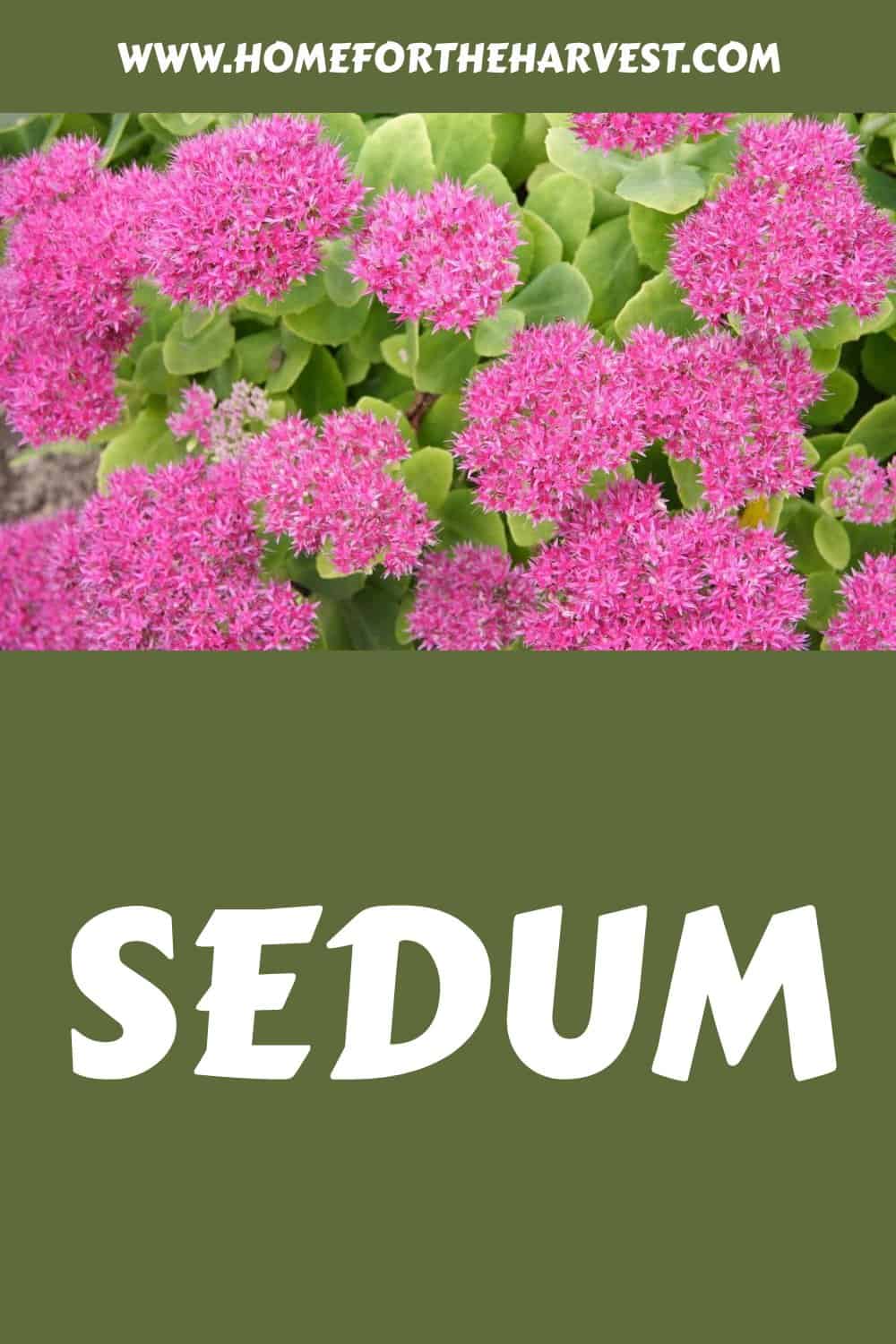Sedum plants are beautiful, yet hardy succulents that are fun because they consist of a large variety of shapes and colors. Because they are so stunning and striking, they can be a wonderful addition to the landscape, use as a ground cover or just show off as an amazing ornamental.
Sedum plants, commonly called broadleaf stonecrop, include 400-600 different species and are typically low-growing herbaceous perennial plants. They can withstand dry climates both hot and cold, don’t do well in wet soil, and bloom in a plethora of colors. Sedums are also symbolic of peace.
Read on to learn all about Sedum plants.
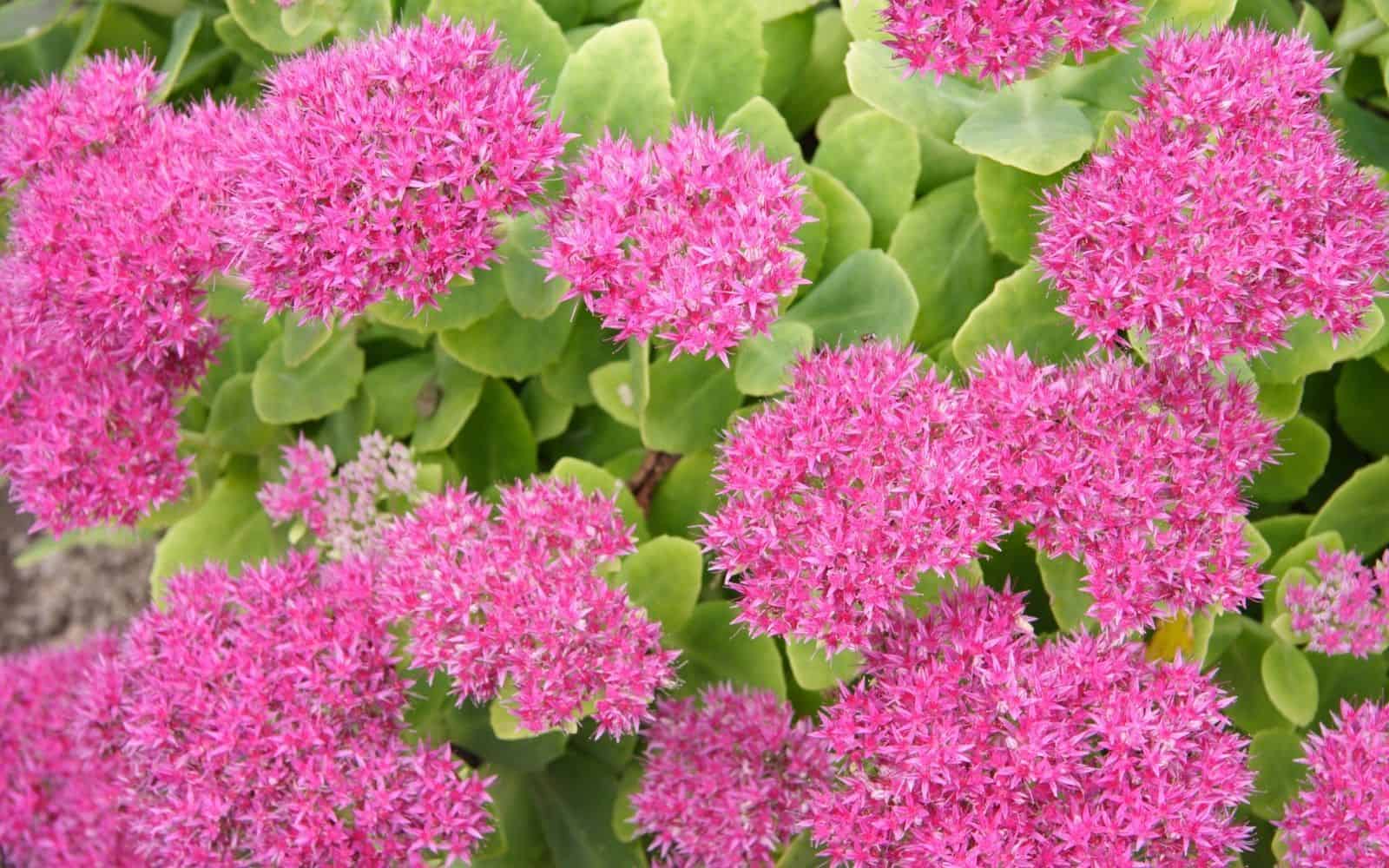
Stonecrops are a perennial plant type that is in the Crassulaceae family and was given the botanical name of Sedum spp. or Sedinae. They are also referred to as Stonecrops. Sedum plants are in the Hylotelephium genus.
Sedum plants vary widely in shape, form, color, and size among all of the species. The most common types or categories of Sedum plants are Low-Growing Sedums and Upright Sedums.
Sedum plants, depending on the species, typically bloom in spring or in the fall months. The foliage and flowers of the Sedum are absolutely stunning! The cut flowers are sometimes in the shape of a rosette or a star, and can have various shades of purple, pink, green, orange, black, green, white, or yellow flowers.
People especially enjoy these plants because not only are they sturdy, but they have attractive foliage and bloom in yellow flowers and other colors in the late summer. Sedum brings a fun, unique texture into the overall picture of your home or garden.
Nicknames specific for the Upright Sedum type include Upright Stonecrop Sedums, Showy Stonecrop Sedums, or Border Sedums. These specific Sedums grow to be anywhere between the range of a foot and a half and three feet tall in height. As for nicknames for the low-growing type, they are additionally referred to as Mat-Forming Stonecrop Sedums (the most common nickname for that type) or occasionally Creeping Sedums. These Sedums don’t grow very tall because instead of growing vertically, they grow in the horizontal direction.
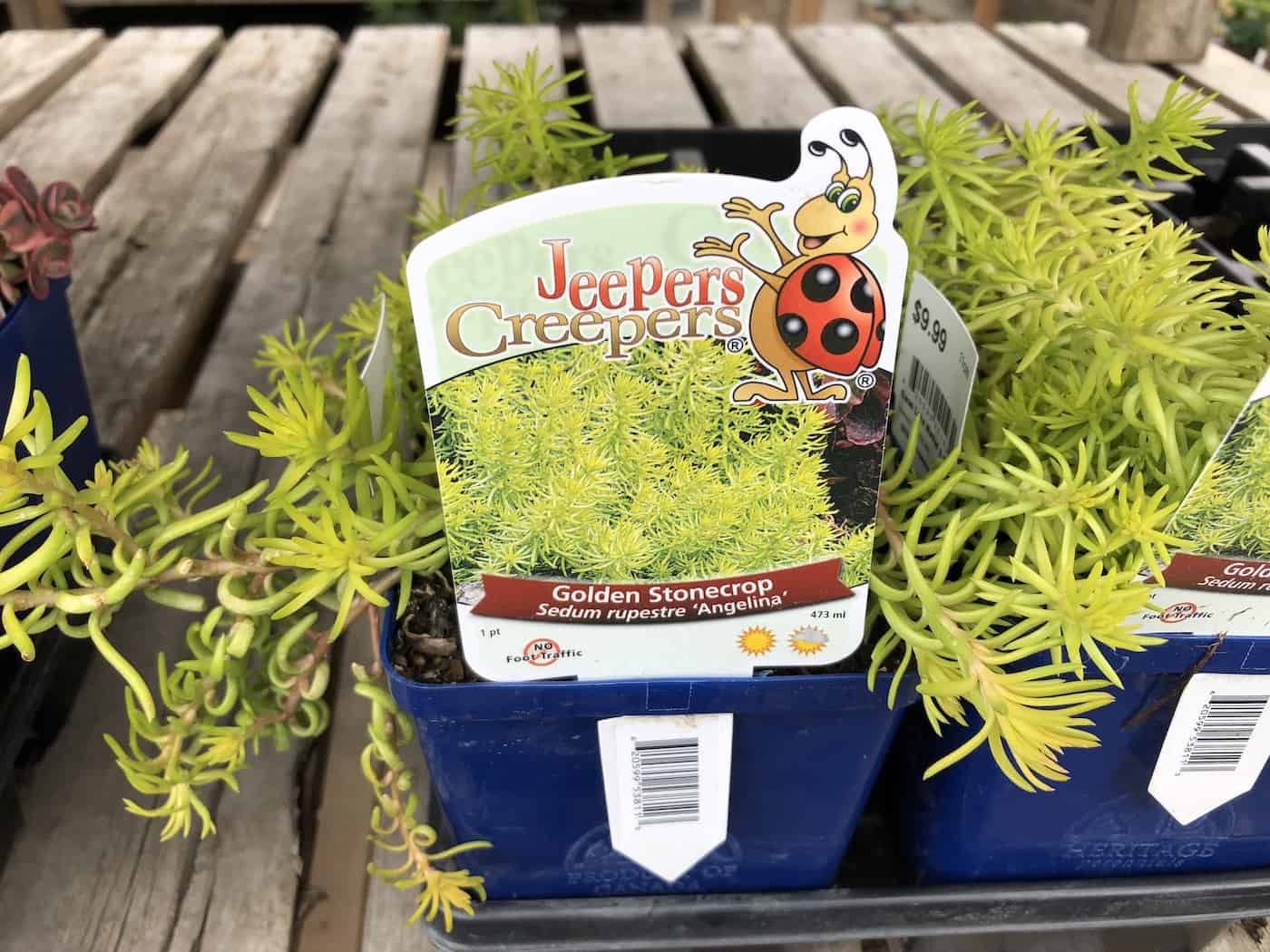
Sedum varieties
There are both downright and upright sedum varieties. Here are some popular cultivars/varieties of the Sedum plant:
- Autumn Joy Sedum
- Sunsparkler Dazzleberry Sedum
- Rock N’ Round Bundle of Joy Sedum
- Angelina Sedum
- Matrona Sedum
There truly are different Sedums for every garden! Here is a big list of 20+ Sedum varieties to grow.
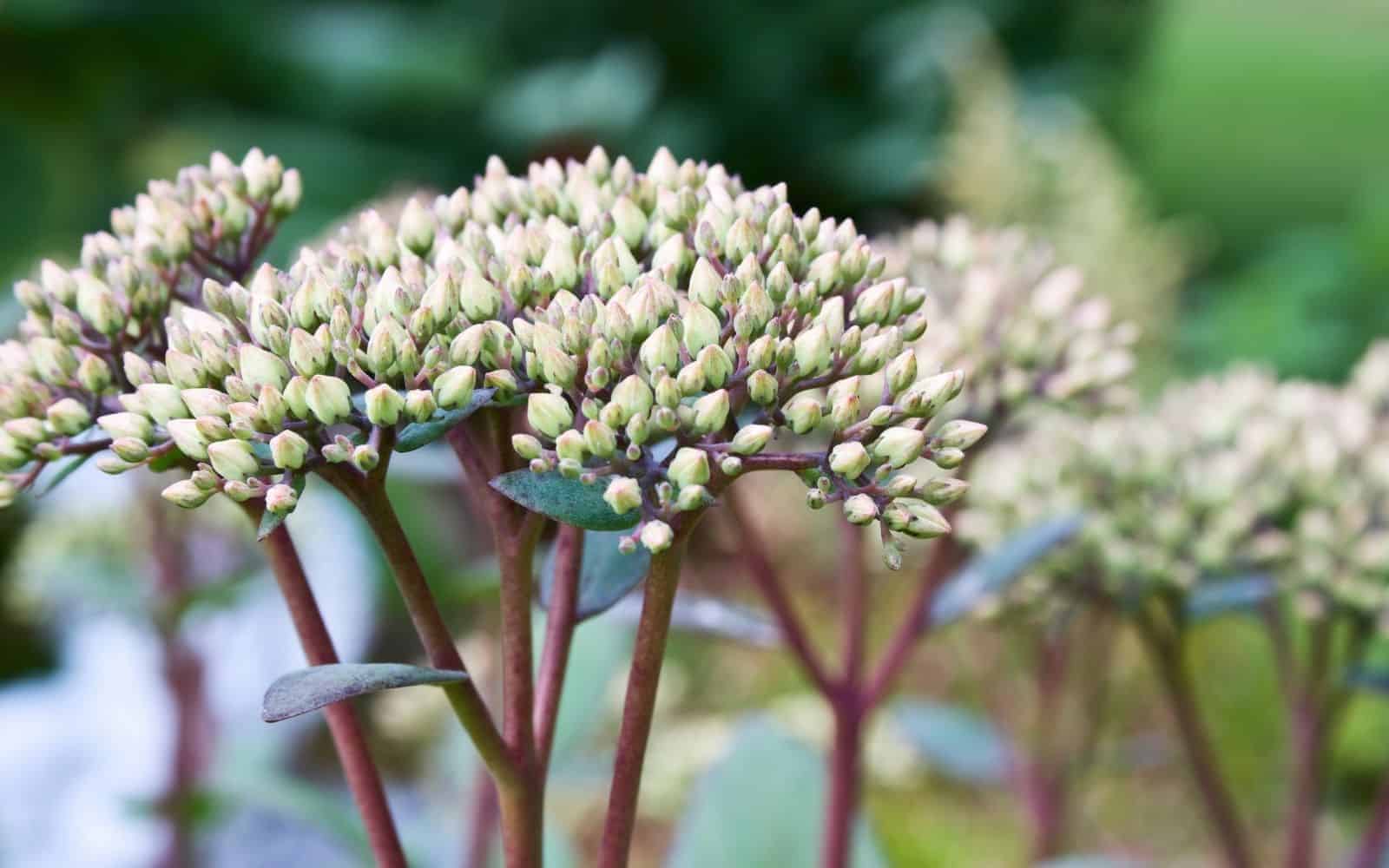
The meanings of Sedum plants
In Latin, there is a word called “sedeo” which, when interpreted, means to sit. Because of the nature of sedum plants where they essentially sit and spread (particularly the low-growing types), these plants were named Sedum plants as derived from that Latin word.
The plant itself, outside of its name, has some neat symbolism as well. Sedum plants are emblematic of peace, calm, and restfulness. Also, since it is a succulent, it represents the same things that succulents as a general group denote, which is enduring love and timelessness.

The best setting for Sedum plants to grow
There is a decent variety of ways to plant Sedum plants. They can be grown in certain types of containers, they can be used in flower arrangements, as kitchen decor, or as decoration in landscapes. They can also beautifully shine in a hanging pot, hillside slope, or a raised bed, and they are great for walls, green roofs, to decorate rock walls, or for use as a ground cover (small Sedum plants are best to use as a ground cover). A bonus is that you can plant Sedum both indoors and outdoors!
Nevertheless, that isn’t the case for all of the species of Sedum plants. When growing Sedum plants indoors, place them on a windowsill that is bright and receives lots of sunlight and very light shade.
As previously mentioned, there are two primary or popular types of Sedum plants, that being the Low Growing, Mat-Forming Sedum type, and the Upright Sedum type. Each of the two has its specialties as far as the best way and place to grow them. Beginning with the first of the two, the Upright type of Sedums grow upright, clustered together tightly, and because of that, they make an exceptional addition to rock gardens!
They typically need to be staked because of how tall they grow, and they also require more water than their low-growing counterparts. Additionally, the pattern of growth Showy Stonecrop Sedums follow results in small white and/or pink flowers blooming, and those flowers do a wonderful job at attracting hummingbirds, bees, and butterflies, as well as other insects that pollinate. That is, even more, the case when there are red, white, or yellow flowers.
As for the Low Growing Stonecrop Sedums, they don’t grow very tall since they grow horizontally at a rapid pace. Despite the quick speed at which Low Growing Stonecrop Sedums grow and spread, they don’t tend to harm other plants in the area, particularly because their roots don’t go very deep at all. Another fun element of this type of Sedum is that it can have maroon, ivory, mint, rosy, purple, blue, chartreuse, copper, or yellow flowers. In fact, it can be multiple colors at once!
This type of Sedum plant in particular likes torrid, deficient soil. All of these qualities that the Low Growing Stonecrop Sedums have made them especially perfect to use for green roofs, crevice gardens, to decorate rock walls or as a ground cover and also to be planted in certain kinds of containers or spots with really grainy soil.
Where in the world can Sedum plants grow?
In general, sedums are beautiful, green succulents that, as previously mentioned, are pretty hardy and diverse. They love the heat and the sun, and they don’t need much water. They don’t even need particularly high-quality soil. As a result, they do incredibly well in dry and hot climates, such as the desert. They also do fairly well in cold climates and can even stand firm in the midst of a freeze. There are a handful of Sedum species that greatly differ in those regards, so it is best to check the specific species to be safe.
It is incredibly remarkable how different Sedum plants can survive the tundra as well as Mexico’s desert climate! The large diversity of conditions and climates they can dwell in allows them to grow pretty much anywhere in the world. As noted above, they initially grew in parts of Asia and Europe, but they made it to new areas through travel and trade.
Because of how tough and vigorous they are, they have managed to withstand the test of time and now grow naturally all around the world.
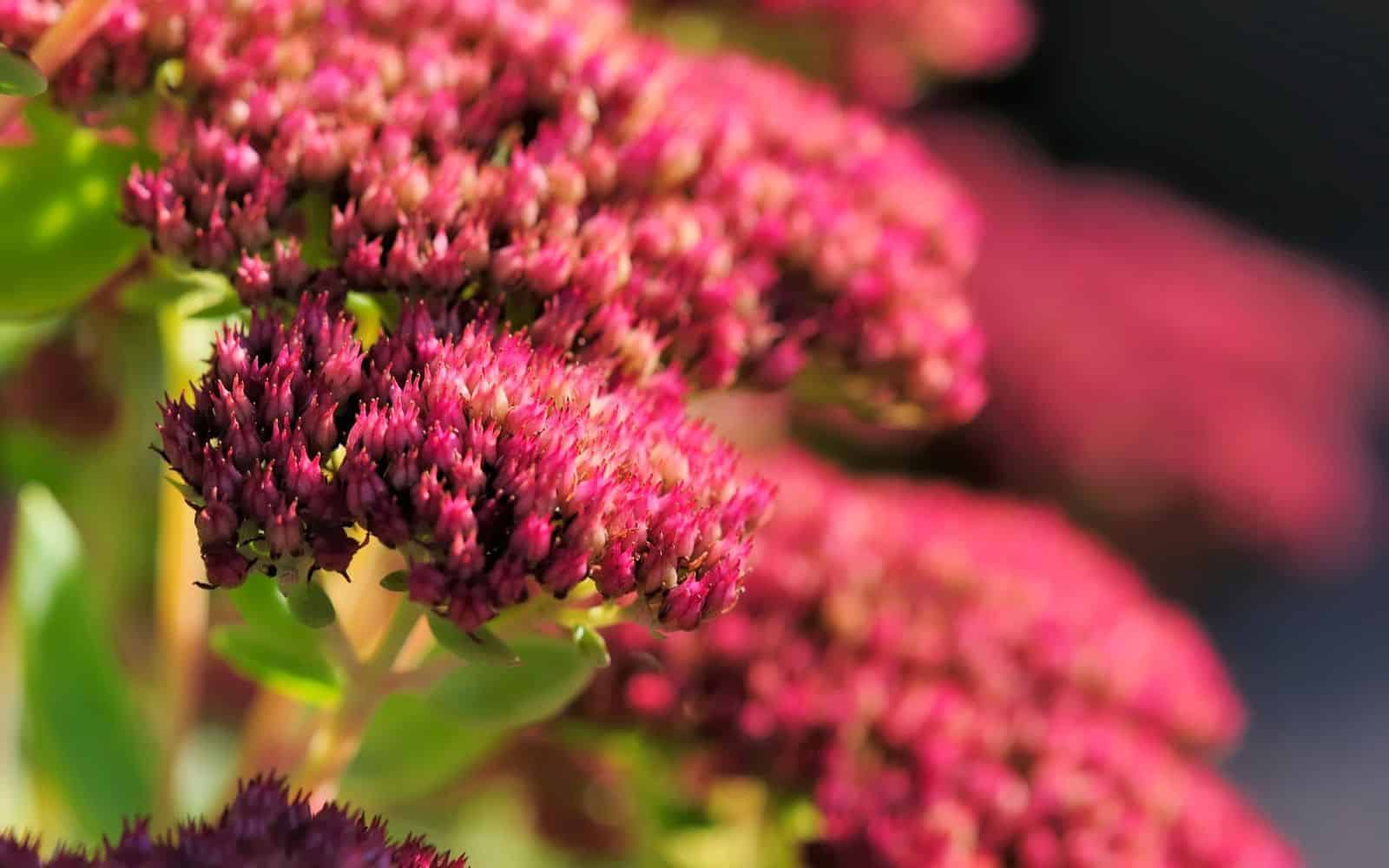
How to care for Sedum plants
A nice perk with Sedum plants is that they are pretty easy to take care of and keep up on since they are low maintenance. While Sedums don’t need good quality, sandy soil, it is important to make sure to use well-drained soil, because Sedums will need that. Most Sedum plants can withstand rain and are drought-tolerant plants, however, so there is no need to worry in that regard. Basically, root rot will occur if there is too much moisture, especially if it is wet for a bit of a longer stretch of time.
Because Sedums need well-drained soil, acidic, neutral, or alkaline soils are all good options to choose from to avoid root rot. Particularly when planting in a container or pot, make sure there is enough well-drained soil and not too much heavy organic matter. As a standard, water Sedum plants around once or twice every week (one inch of water a week is ideal but that varies based on the specific species of Sedum).
How much sun do Sedum plants need?
Make sure the Sedum plants are getting enough sun and aren’t placed in excessive heat consistently (at least without giving them a bit more water to compensate). In the midst of extreme heat or inadequate amounts of sun, Sedum plants will grow limp and gangly. They should have at least five or six hours of direct sunlight and even more direct sunlight than that while the blue, red, pink or yellow flowers are starting to bloom.
An additional bonus is that they don’t need to be fertilized. After all, they thrive in soil that is subpar, and not rich in nutrients. However, organic compost can be used in place of fertilizer when needed. Just be especially sure to never use chemical fertilizers, particularly those enriched with nitrogen, as that will destroy the plant.
On a similar note, Sedums don’t require deadheading, but if you want to prune a Sedum plant, particularly in an attempt to grow bigger flowers on the plant, prune by pinching or by using shears or a pruning stick. The best time to prune is early in July.
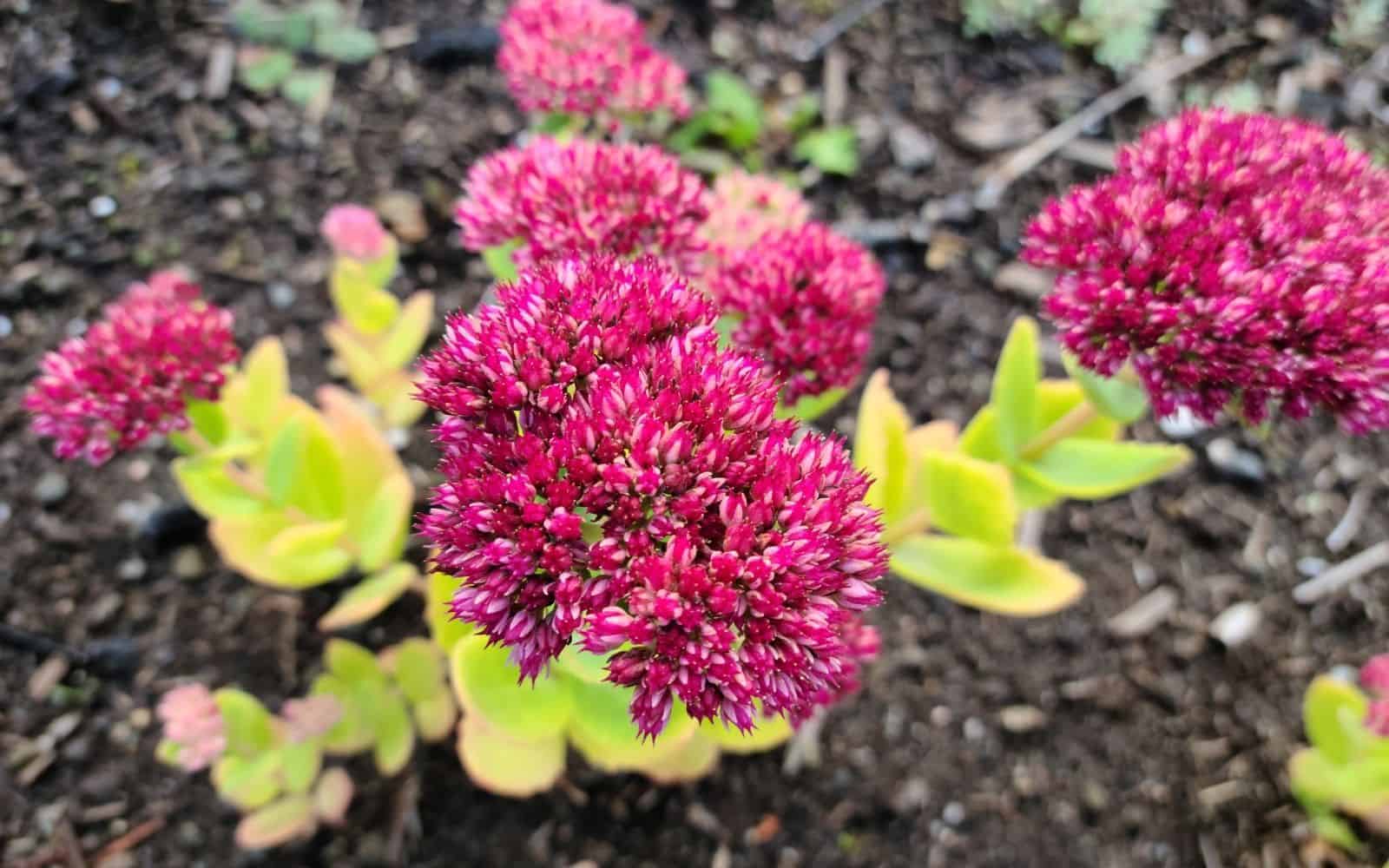
Tips for helping Sedum plants to grow
While things such as bugs aren’t problematic to Sedum plants, for the most part, other things are. For starters, it is best to wait until after the last frost before planting it, so it can adapt and establish itself in the early spring instead of during extremely high or low temperatures.
However, while that is an important problem, it is easily avoided, so the bigger threat for Stonecrops is competing for plants or weeds. The reason for that is because of how small their roots are—roots from neighboring plants (especially weeds) can harm the plant by means of confining or uprooting the Sedum. Using mulch with pebbles or bark inside of it in areas where Sedum plants are planted will help prevent those issues from occurring, and that will keep the weeds away as well.
Growing guide for Sedum plants
Sedum plants are primarily grown by starting with a bare root (you can start the growing process early spring through summer with this method) or a Sedum plant that had previously been potted. If you want to cultivate Sedum plants, put a tiny part of another Sedum plant’s stem (roughly three to six inches) in the dirt or place a leaf from another Sedum plant on the dirt.
Whichever of the two options you choose, make sure to water occasionally. By doing those couple of simple steps, a new Sedum plant will be born and grow to its full size in a matter of a few weeks! However, if it is a Creeping Sedum, the rule goes as thus: “the first year they sleep, the second year they creep and the third year they leap!”
Also, keep in mind that they should have anywhere between six inches to twenty-four inches between where each Sedum is planted. Understandably, Upright Sedums can be planted closer to one another than Low Growing Sedums can.
How to repot container-grown Sedum plants
The first thing to keep in mind with repotting really any plant is choosing the best time to do so. With Sedum plants, the spring has the prime timeframe for repotting Sedum plants since it is more of a happier medium, particularly for regions that face extremely hot or cold temperatures throughout the year.
It can also be helpful to place fast-draining succulent or cactus mix on top of the soil. The Sedum may need to be moved into a bigger pot as well. Be careful and gentle when removing the Sedum from where it is currently planted, and when finished, place the plant in a spot with lots of direct sunlight.


